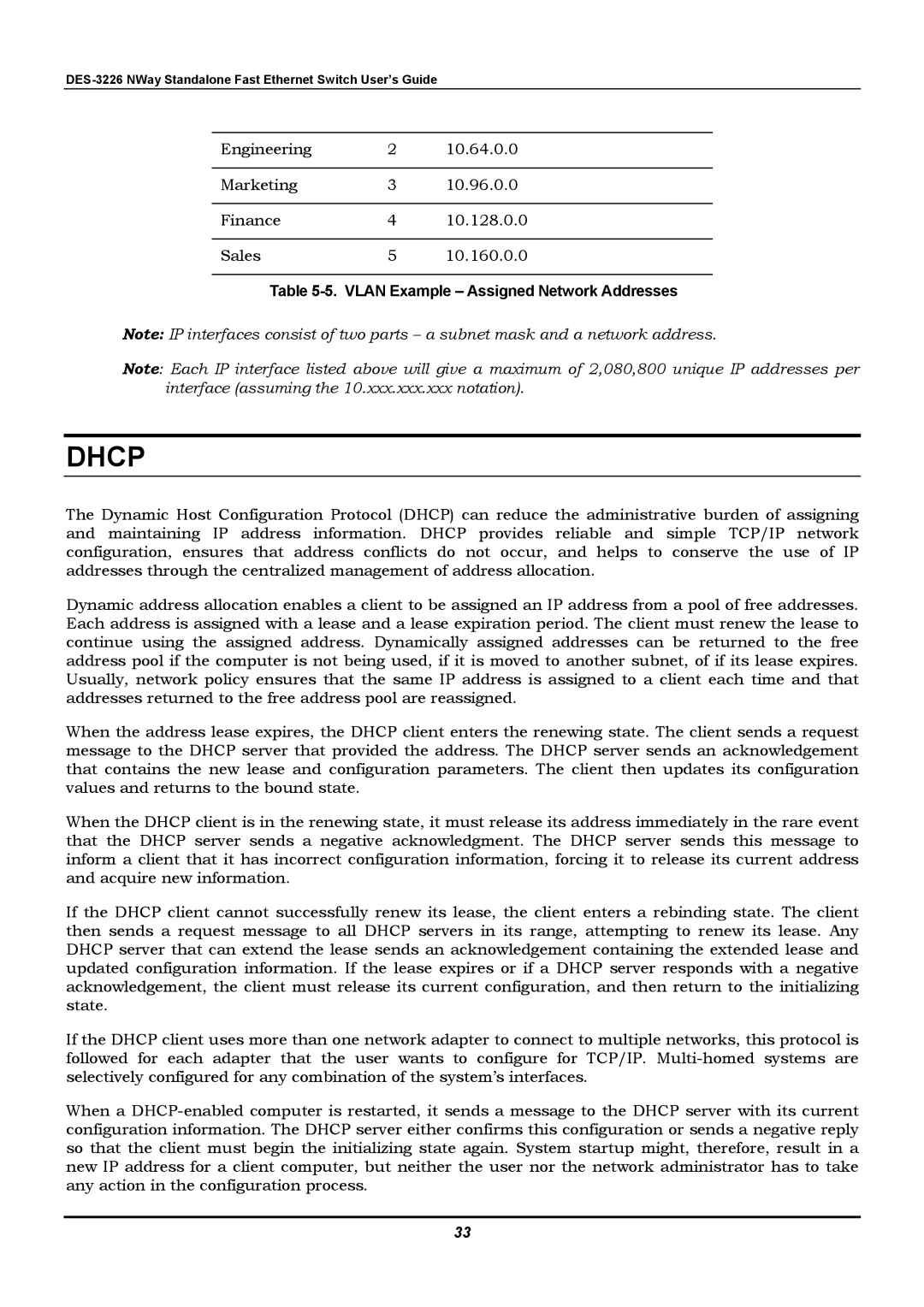
DES-3226 NWay Standalone Fast Ethernet Switch User’s Guide
Engineering | 2 | 10.64.0.0 |
|
|
|
Marketing | 3 | 10.96.0.0 |
|
|
|
Finance | 4 | 10.128.0.0 |
|
|
|
Sales | 5 | 10.160.0.0 |
Table
Note: IP interfaces consist of two parts – a subnet mask and a network address.
Note: Each IP interface listed above will give a maximum of 2,080,800 unique IP addresses per interface (assuming the 10.xxx.xxx.xxx notation).
DHCP
The Dynamic Host Configuration Protocol (DHCP) can reduce the administrative burden of assigning and maintaining IP address information. DHCP provides reliable and simple TCP/IP network configuration, ensures that address conflicts do not occur, and helps to conserve the use of IP addresses through the centralized management of address allocation.
Dynamic address allocation enables a client to be assigned an IP address from a pool of free addresses. Each address is assigned with a lease and a lease expiration period. The client must renew the lease to continue using the assigned address. Dynamically assigned addresses can be returned to the free address pool if the computer is not being used, if it is moved to another subnet, of if its lease expires. Usually, network policy ensures that the same IP address is assigned to a client each time and that addresses returned to the free address pool are reassigned.
When the address lease expires, the DHCP client enters the renewing state. The client sends a request message to the DHCP server that provided the address. The DHCP server sends an acknowledgement that contains the new lease and configuration parameters. The client then updates its configuration values and returns to the bound state.
When the DHCP client is in the renewing state, it must release its address immediately in the rare event that the DHCP server sends a negative acknowledgment. The DHCP server sends this message to inform a client that it has incorrect configuration information, forcing it to release its current address and acquire new information.
If the DHCP client cannot successfully renew its lease, the client enters a rebinding state. The client then sends a request message to all DHCP servers in its range, attempting to renew its lease. Any DHCP server that can extend the lease sends an acknowledgement containing the extended lease and updated configuration information. If the lease expires or if a DHCP server responds with a negative acknowledgement, the client must release its current configuration, and then return to the initializing state.
If the DHCP client uses more than one network adapter to connect to multiple networks, this protocol is followed for each adapter that the user wants to configure for TCP/IP.
When a
33
